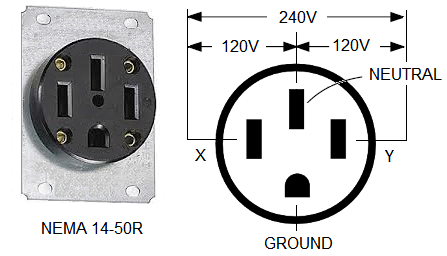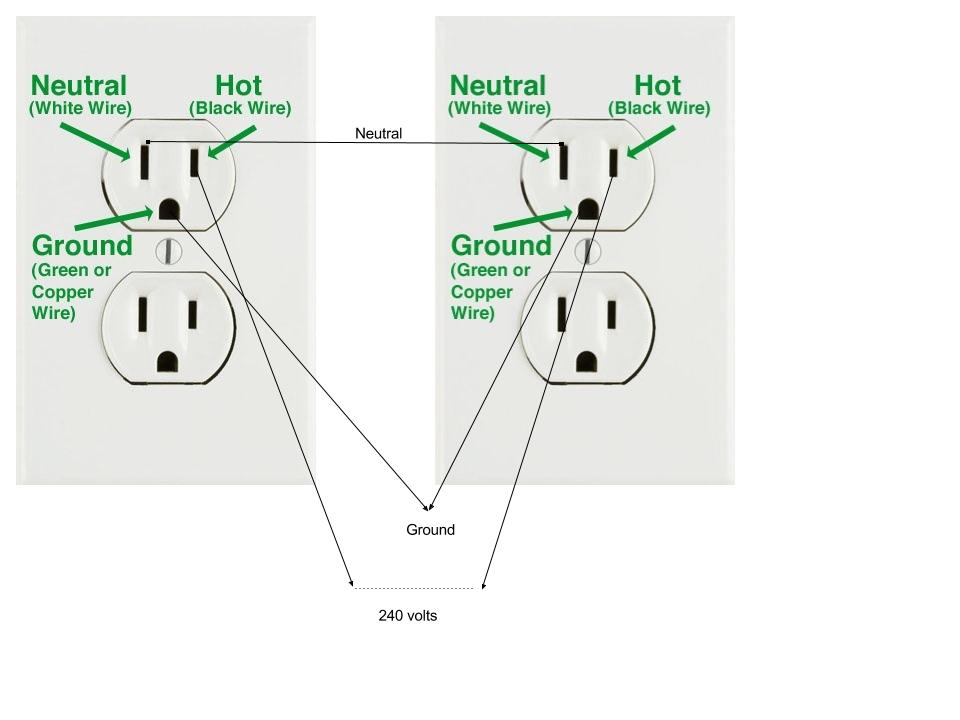Last Update: 2021-08-23T21:53:19.702Z
From a 240 volt 20 amp outlet your effective charge rate is 16 amps, or about 3.5 kiloWatts. That's good for about 11-12 miles range per hour of charging. See Electric car charging speed and effective trip speed on road trips
Getting that charge rate means using a matching charging station such as the TurboCord or Clipper Creek LCS-20. See The best electric car charging stations for home charging or on trips
All that is straight-forward but what if you don't even have a 240 volt outlet? For example your landlord or HOA may allow you to charge your car in an apartment/condominium complex, but not allow you to install a 240 volt outlet. Or your home service panel may be maxed out and while you have plenty of 120 volt outlets it's impossible (short of a service panel upgrade) to add a 240 volt outlet. Or you may be on the road, have located some 120 volt outlets, but no 240 volt outlet.
In each case the 120 volt outlet will charge your car, but wouldn't it useful to charge faster? In that last case especially, the 20+ hours required for 120 volt charging is not acceptable while traveling.
With a little bit of trickery it's possible to synthesize a 240 volt outlet from two 120 volt outlets. WARNING: What follows MUST BE FOLLOWED CAREFULLY. This is trickery and it is possible to screw this up if you don't understand.
Theory: 240 volt circuit wiring

We have to start from this technical detail. The four-connector 240 volt power plugs all come with two "hots" (in this picture labeled "X" and "Y"), a neutral, and a ground. Those four lines are connected this way through the service panel to, at least, the transformer on the utility pole. The 240 volts is actually derived from the 3-phase AC delivered over the the utility lines, but we won't go into that.
Between the two hot lines you measure 240 volts. Between each hot line and the neutral line you measure 120 volts. This isn't magical, it's a derived feature from the method for getting 240 volts single phase AC out of the 3-phase AC utility lines. The neutral line happens to be the middle point of the circuit that delivers 240 volts, and it just so happens that between each leg of that circuit you can draw 120 volts.
Theory: 240 volts from 120 volts

The key to the trick is a little-known fact about 120 volt outlet wiring. We have a hot, a neutral, and a ground. That neutral line is the neutral of the 240 volt circuit shown above, and the hot line must be one of the hots of the 240 volt circuit.

Hence, by wiring together two 120 volt outlets as shown you can synthesize 240 volts. The two Neutral lines are connected together, as are the two ground lines, then the two hot lines become the hot lines of the 240 volt outlet.
WARNING WARNING: It is not as simple as this looks.
For this to work, two conditions must be met:
- The two 120 volt outlets must be on opposite legs of the 240 volt circuit.
- The two 120 volt outlets must be wired correctly - the "neutral" line must actually be connected to the neutral of the 240 volt circuit, and the "hot" line must be connected to one of the hots of the 240 volt circuit.
A third condition is that the circuits should be unloaded. The 3 kiloWatt charging station will be drawing 16 amps. Because that's the maximum continuous load through a 20 amp circuit, each 120 volt outlet must have a 20 amp fuse, and otherwise be ready for 20 amps service. Anything else plugged into either circuit will put the load above the limits and risk problems.

Putting it into practice
Hopefully I've done my job and given enough to understand how this works, AND enough to know whether you're capable of actually messing around with this and making it work. Wiring a charging adapter is trivial compared to this task. Successfully synthesizing a 240 volt circuit, and not burning down a building, requires care to ensure you're utilizing properly wired outlets on opposite legs of the 240 volt circuit.
Fortunately several companies have built suitable products and have testers available so you can inspect the power outlets.
With these boxes you will use two extension cords, connecting them to a combiner box that implements the wiring shown above. The box has a 240 volt outlet to use with your charging station. Hopefully the combiner box also has circuitry to detect fault conditions and shut things down.
The companies which have been located are:
-
quick220.com -- They're orientated to serving electric vehicle charging applications.
-
steam-brite.com
-
refreshyourhome.com
-
eBay search for "Quick 220"
Additionally, a technical discussion exists here which includes a picture of someone charging a car via a Quick220 unit:
priuschat.com



